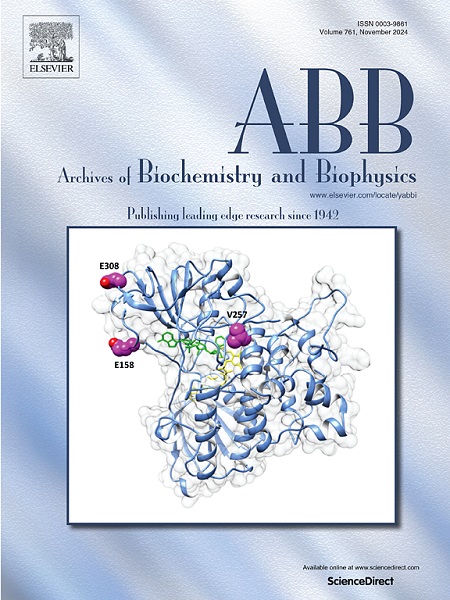Suppression of TLR4/NF-κB signaling by kaurenoic acid in a mice model of monosodium urate crystals-induced acute gout
IF 3.8
3区 生物学
Q2 BIOCHEMISTRY & MOLECULAR BIOLOGY
引用次数: 0
Abstract
Aim
The aim of the current study was to investigate the potential therapeutic effect of kaurenoic acid (KA) against Monosodium Urate Crystals (MSU)-induced acute gout by downregulation of NF-κB signaling pathway, mitigating inflammation and oxidative stress. KA potentially targeted NF-κB pathway activation and provided comprehensive insights through multiple approaches. This was accomplished by advanced analytical techniques. This methodology highlighted the efficacy of KA in acute gout attacks offering new approach for gout management.
Methods
In-vivo model of acute gout was established in BALB/c mice. Anti-inflammatory and urate-lowering potential was determined through pain behavioral evaluation, biochemical analysis, histological and immunohistochemical assays, radiological assessments, Fourier Transform Infrared (FTIR) analysis, and computational analysis.
Results
The paw edema, joint thickness, and the frequency and duration of acute gout flare-ups were all significantly (p < 0.001) decreased by the administration of KA. A considerable reversal of inflammation and deterioration was observed in the KA-treated groups in X-ray examination. The FTIR spectroscopy indicated the changes in the molecular makeup of tissues, and modifications of biomolecules including proteins, lipids, and carbohydrates. Histopathological changes showed marked (p < 0.001) improvements in cellular structure of the paw, and inflammatory cell infiltration in the treatment groups. Trichrome staining revealed suppressed collagen deposition, inflammation, and tissue repair in the paw. In paw tissues, the KA therapy up-regulated IκB-α expression while down-regulating toll-like receptor 4 (TLR4), nuclear factor-kappa B (NF-κB), inducible nitric oxide synthase (iNOS), and cyclooxygenase-2 (COX-2) expression. On the other hand, KA therapy greatly increased antioxidants and decreased oxidative stress indicators significantly (p < 0.001). According to Evans's blue permeability analysis, results showed that the treatment groups' vascular permeability was intensely reduced in comparison to the diseased group. Molecular docking studies indicated that KA appeared to have a high tendency to bind to protein targets. KA was associated with the drop in the cytokines such as tumor necrosis factor-alpha (TNF-α) and interleukin-1beta (IL-1β).
Conclusion
In conclusion, this study highlighted the potential therapeutic effect of KA in alleviating MSU-induced gout by suppressing the NF-κB signaling pathway. The anti-inflammatory and antioxidant activity was demonstrated by behavioral studies and advanced biochemical evaluations including blood analysis and oxido-nitrosative stress markers. Histopathological analysis, including H&E staining, immunohistochemistry, and Masson Trichrome staining, revealed tissue preservation, while FTIR and X-ray revealed structural improvements. Molecular docking verified strong binding affinity to NF-κB-related targets, verifying its mechanistic action. These findings suggest promising applications of KA in acute gout management due to its potent NF-κB modulating activity.

求助全文
约1分钟内获得全文
求助全文
来源期刊

Archives of biochemistry and biophysics
生物-生化与分子生物学
CiteScore
7.40
自引率
0.00%
发文量
245
审稿时长
26 days
期刊介绍:
Archives of Biochemistry and Biophysics publishes quality original articles and reviews in the developing areas of biochemistry and biophysics.
Research Areas Include:
• Enzyme and protein structure, function, regulation. Folding, turnover, and post-translational processing
• Biological oxidations, free radical reactions, redox signaling, oxygenases, P450 reactions
• Signal transduction, receptors, membrane transport, intracellular signals. Cellular and integrated metabolism.
 求助内容:
求助内容: 应助结果提醒方式:
应助结果提醒方式:


